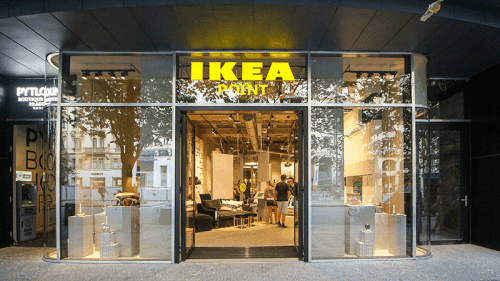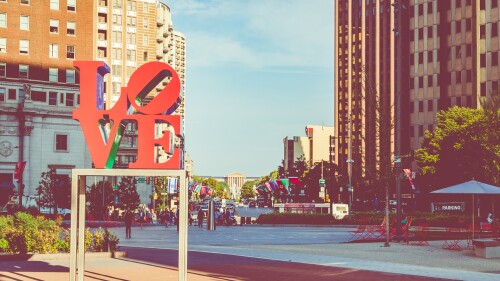Downtown urban office and mixed-use markets are “hot,” but so are some suburban markets—including the iconic Silicon Valley. At the 2015 ULI Spring Meeting in Houston, a panel moderated by AECOM senior vice president Stephen Engblom explored regional responses to market demands outside traditional downtown markets.
The 200 million-square-foot (18.6 million sq m) Houston office market is about half urban and half suburban, explained W. Aaron Thielhorn, managing director, Trammell Crow Company. “Houston is the fifth-largest metro [area] in the U.S., and has led the country in population growth, adding some 600,000 new residents since 2010,” he said. “As a coastal prairie with no barriers and no zoning, the metropolitan area continues to spread.”
Thielhorn pointed out that most of Houston’s major submarkets are in the suburbs, including the Woodlands north of downtown and the Energy Corridor to the west. Flush with science, technology, engineering, and math (STEM) job opportunities, businesses have located in these submarkets to help recruit and retain talent.
Trammell Crow is focusing on the Energy Corridor for its latest development, a 1.7 million-square-foot (157,000 sq m) Class A office park called Energy Center. The first two buildings have been completed; the company is currently developing three newer buildings in partnership with Principal Real Estate Investors. ConocoPhillips has preleased 850,000 square feet (79,000 sq m), including all of Energy Center Three and half of Energy Center Four. The new buildings will feature extensive amenities, said Thielhorn, ranging from on-site dry cleaning to adjacent parks and trails, as well as proximity to regional shopping and dining options.
Kevin Penn of Highwoods Properties discussed how his firm is focused on ten secondary markets, mostly in the Southeast, with 31 million square feet (2.9 million sq m) of office space spanning seven states. “We think the designation of central business district [CBD] versus suburbs is overly simplistic,” he said. “Instead, we like to refer to ‘best business districts.’ For example, he pointed out, Atlanta’s CBD is not as prestigious or active as its Buckhead submarket. In Orlando and Pittsburgh, however, the CBD is the place to be.
Penn said his company works hard to provide amenities in its suburban office developments, both in ground-up development and redevelopment. Its GlenLake Five development in Raleigh, North Carolina, will replace traditional lobbies with space for active collaboration, along with a fitness center and café, as well as outdoor seating and active recreational space just outside the building, which will be accessible by a garage-type door. “It’s all about the transformation from ‘me space’ to ‘we space,’ ” he commented.
Undoubtedly the most evolved use of suburban office space is in Silicon Valley. Denise deVille of Landbank Investments described how her family-owned company began converting farmland to low-rise office space during the 1970s, and now the third generation is implementing new workplace designs driven by the needs of technology companies.
“The large technology companies like Facebook, Google, LinkedIn, Apple, and Nvidia have created iconic, user-centric designs for their headquarters, using smart technologies, large floor plates, a very high level of sustainability, and a wealth of amenities,” she noted. Amenities include outdoor seating, amphitheaters, collaborative space, rooftop gardens, cafeterias, grab-and-go cafés, food trucks, fitness centers and athletic fields, child-care and pet-care centers, dry cleaning, banking, gift shops, and facilities for bicycle storage, repair, and sharing.
Inspired by these transformational headquarters, Landbank is developing Central & Wolfe in Sunnyvale, converting 220,000 square feet (20,400 sq m) of obsolete tilt-up office space to an exciting 777,000-square-foot (7,200 sq m) campus with 52 percent open space, no surface parking, a 500-seat amphitheater, on-site solar photovoltaic power generation, and more. Designed by HOK, the Leadership in Energy and Environmental Design (LEED) Platinum campus will have three main buildings with four floors each, connected by walkways that promote interaction. Two smaller buildings will house a cafeteria, fitness center, barbershop, and bike-repair center. An underground parking structure will accommodate 2,400 cars.
A major challenge for suburban office locations is transportation. While awaiting the advent of shared driverless cars, noted deVille, Silicon Valley has taken matters into its own hands with a range of road-based options including free rides on company-owned buses that allow employees to work while commuting, along with concierge parking, shared vehicles, and more. “Each bus takes 45 cars off the road,” deVille said. “People in Silicon Valley need to get to their offices in order to collaborate.”
But as shared driverless cars and better public transit options become available, suburban property owners will face a new dilemma, deVille said. “What are we going to do with all these parking spaces?”




